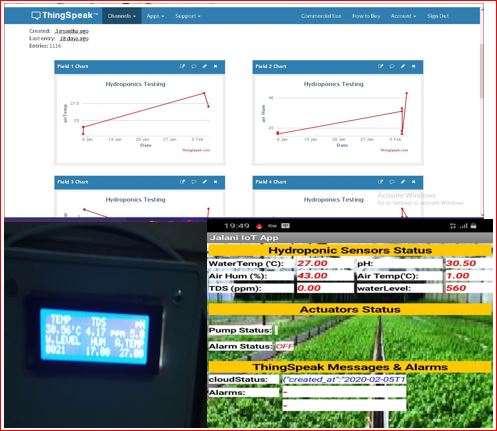Introduction
Imagine a world where farmers no longer have to rely solely on experience and guesswork to detect livestock diseases. Thanks to artificial intelligence (AI), this is becoming a reality. AI-powered tools are revolutionizing the agricultural sector, enabling early disease detection and saving both livestock and money. But how does AI achieve this? Let’s dive in.
The Importance of Early Disease Detection in Livestock
Early detection of diseases in livestock is crucial for preventing outbreaks, reducing economic losses, and ensuring food security. Traditional methods rely on physical inspections and veterinarians’ expertise, but these approaches are time-consuming and often detect diseases only after they have progressed. AI, however, offers a faster and more precise alternative.
How AI is Changing Livestock Disease Detection
AI uses machine learning (ML), computer vision, and data analytics to monitor livestock in real time. By analyzing data from various sources, AI can identify subtle behavioral or physiological changes that signal early-stage diseases.
Machine Learning in Livestock Health Monitoring
ML algorithms analyze vast amounts of data collected from livestock, including temperature, movement patterns, and feeding habits. By recognizing deviations from normal patterns, AI can predict diseases before they become severe.
Computer Vision for Disease Detection
Computer vision enables AI to analyze images and videos of livestock. By detecting visible signs of illness such as changes in posture, coat condition, or unusual movements, AI can alert farmers to potential health issues.
IoT Sensors and Data Analytics
The Internet of Things (IoT) plays a key role in AI-driven livestock health monitoring. Wearable sensors collect real-time data on vital signs, while AI analyzes this data to detect anomalies. Predictive analytics further enhances disease detection by forecasting potential outbreaks based on historical trends.
Benefits of AI in Livestock Disease Detection
Faster Diagnosis and Response
AI can detect diseases at an early stage, allowing farmers to take preventive measures before an outbreak occurs. This minimizes losses and ensures animal welfare.
Reduced Dependency on Veterinarians
While veterinarians remain essential, AI can assist by identifying potential health issues, allowing vets to focus on treatment rather than detection.
Improved Animal Welfare
AI-driven health monitoring ensures that livestock receive timely medical attention, reducing suffering and improving overall well-being.
Cost Savings for Farmers
By preventing disease outbreaks and reducing the need for extensive treatments, AI helps farmers save money on veterinary costs and lost livestock.
AI Technologies Used in Livestock Health Monitoring
Deep Learning for Image Recognition
Deep learning models analyze images of livestock to detect subtle changes that might indicate disease. These models can differentiate between healthy and sick animals with high accuracy.
Natural Language Processing (NLP) for Data Analysis
NLP allows AI to process and interpret veterinary reports, research papers, and farmer notes, enabling better disease prediction and prevention strategies.
Cloud-Based AI Platforms
Cloud computing enables farmers to access AI-driven health monitoring tools without needing extensive on-site infrastructure. Data is stored securely and analyzed remotely, making it accessible from anywhere.
Real-World Applications of AI in Livestock Health
AI-Powered Wearable Devices
Companies are developing smart collars and ear tags equipped with sensors that track livestock health in real time. These devices monitor parameters such as heart rate, temperature, and activity levels.
Automated Drones for Surveillance
Drones equipped with AI-powered cameras can monitor large herds, identifying sick animals through movement analysis and thermal imaging.
AI-Assisted Veterinary Diagnosis
AI tools assist veterinarians by providing diagnostic recommendations based on symptoms and medical history. This enhances decision-making and treatment planning.
Challenges and Limitations of AI in Livestock Health
Data Quality and Availability
AI models require high-quality data for accurate predictions. Inconsistent or incomplete data can lead to false positives or negatives.
High Initial Investment
Implementing AI-powered systems can be costly. However, long-term benefits often outweigh the initial expenses.
Farmer Training and Adoption
Many farmers lack technical expertise in AI, making adoption challenging. Training programs and user-friendly AI tools can bridge this gap.
The Future of AI in Livestock Disease Detection
Integration with Blockchain for Transparency
Combining AI with blockchain can improve traceability and ensure transparency in disease monitoring and food safety.
Advanced Predictive Analytics
Future AI models will become even more accurate by incorporating genetic and environmental data for disease prediction.
AI-Driven Smart Farms
The integration of AI with automated feeding, climate control, and disease monitoring will lead to fully AI-powered smart farms, enhancing efficiency and productivity.
Conclusion
AI is transforming livestock disease detection by offering early diagnosis, improving animal welfare, and reducing economic losses. While challenges exist, continuous advancements in AI technology will make it even more effective and accessible in the coming years. Farmers who embrace AI-driven solutions will be better equipped to protect their livestock and ensure sustainable farming practices.
FAQs
1. How does AI detect diseases in livestock?
AI analyzes data from sensors, cameras, and historical records to identify early signs of disease through pattern recognition and anomaly detection.
2. Are AI-based livestock monitoring systems expensive?
While initial costs can be high, AI systems often lead to long-term savings by preventing disease outbreaks and reducing veterinary expenses.
3. Can AI completely replace veterinarians?
No, AI is a supportive tool that assists veterinarians by identifying potential health issues. Vets are still essential for treatment and expert decision-making.
4. What types of livestock benefit from AI health monitoring?
AI can be used for cattle, poultry, pigs, sheep, and other livestock to monitor health and detect diseases early.
5. Is AI in livestock farming widely adopted?
Adoption is increasing, particularly among large-scale farms. However, efforts are being made to make AI tools more accessible to small and medium-sized farmers.


